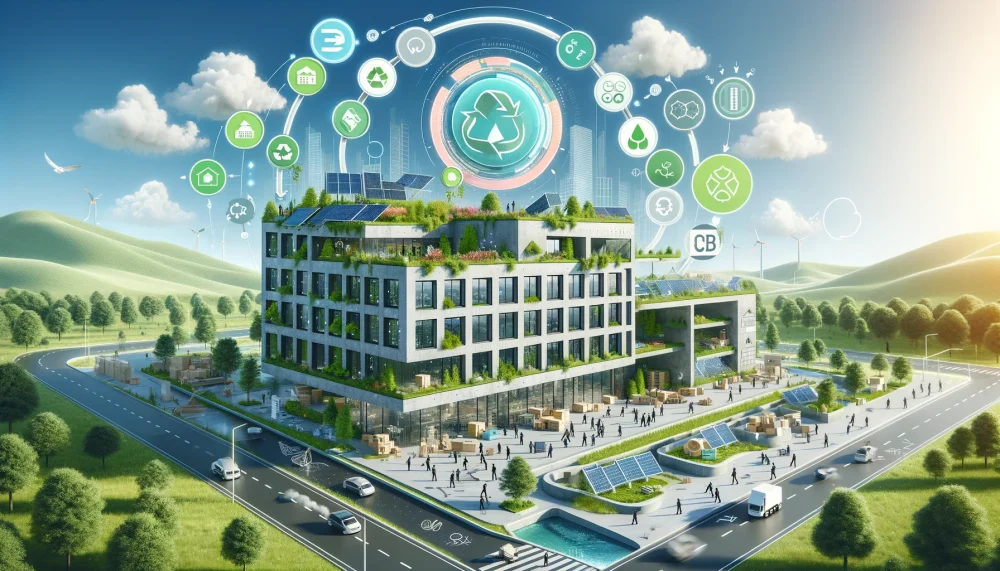Introduction
Thecircular economy is a fundamental concept in the modern world, particularly in the real estate and construction sectors. It aims to minimize waste and maximize the use of resources. It’s a job that requires structural changes in organizations in order to be effective. However, accurately measuring the impact and performance of the circular economy remains a major challenge for industry professionals.
I. The fundamental principles of the circular economy
1. Reusing and recycling materials
In the circular economy, the reuse and recycling of materials is crucial. They help reduce demand for new resources and the ecological footprint of construction projects.
2. Extending the lifespan of products and buildings
The circular economy encourages the design of sustainable buildings, i.e. those in which extending the lifespan of materials and structures is a priority.
3. Designing sustainable buildings and projects
The creation of eco-designed buildings that incorporate recycled materials and are energy-efficient is a pillar of the circular economy.
4. Designing disassemblable buildings
During operation and deconstruction, all resources must be managed in a circular economy, so that they never become waste. Construction methods that encourage dismantling are essential for reducing removal costs and maximizing reuse, upcycling and recycling.
II. Key indicators for measuring the circular economy
To measure the effectiveness of a circular economy strategy, a number of indicators exist:
1. Recycling and reuse of materials
It is essential to track the percentage by mass of materials recycled or reused in construction projects.
2. Reducing consumption of new resources
Measuring the reduction in the use of new resources is a key environmental performance indicator.
3. Reducing construction and demolition waste
Tracking the amount of waste generated and its management is crucial to assessing the effectiveness of circular economy practices. myUpcyclea, for example, offers a “waste balance sheet” that calculates the mass of waste avoided per recycling eco-system.
4. Building energy efficiency
Assessing energy efficiency helps to understand the overall environmental impact of buildings.
5. Upcyclea’s CO2 balance (in kg eq CO2) :
Ecosystem greenhouse gas emissions are a key indicator to monitor. In particular, they can be used to make informed choices about renovation scenarios (by providing quantified information on working hypotheses).
6. Water balance (in L) :
Water consumption avoided by the recovery ecosystem.
7. Balance sheet (in €) :
Costs and revenues of the value-added ecosystem, showing a positive or negative balance.
III. Measurement tools and methods
1. Software and applications
Digital tools are used to analyze and monitor the environmental performance of projects. Some platforms, for example, allow you to aggregate quantities of material, while others also provide data in the form of Circular Passports®.
2. Certification and environmental standards
Certifications such as HQE, LEED or BREEAM now assess the “circularity” of buildings to circular economy standards.
3. Regular environmental audits and assessments
Regular audits are essential to ensure that circular economy principles are respected throughout a project’s lifecycle.
IV. Case studies and success stories
1. Exemplary projects
The presentation of construction or renovation projects that integrate the circular economy inspires and guides the industry. Players such as DomoFrance are pioneers in this field, and have succeeded in accurately measuring their circular economy strategy and achieving excellent reuse figures.
2. Initiatives by social landlords
Social landlords’ commitment to the circular economy demonstrates the positive impact of these practices on the community and the environment. Numerous landlords have already joined forces within the Piraeus platform to pool their used resources and set up outlets at other sites.
Conclusion
Measuring the circular economy is essential for sustainable development. This article highlights the importance of this measure for real estate and construction professionals, offering an overview of the tools and methods available. It’s time to take action and adopt these practices for a more sustainable future.
